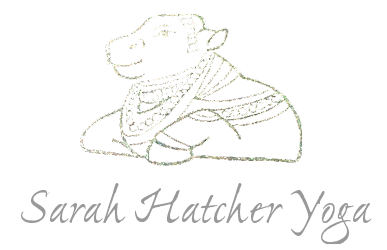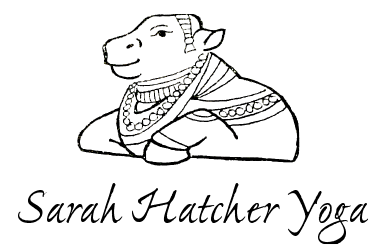Chanting: Why do it?
Thank goodness for this practice of ashtanga yoga, not just the physical practice - but all eight limbs of it. My new favourite limb is the singing limb - where is that located you may ask, in the niyamas?
Yes, svadhyaya!
Is it located in the inner limbs - does it happen during meditative awareness, dhyana?
Yes!
What about asana, can you sing in this limb too?
Heck, why not!
Dash is almost two years old. Since he was born and since the time I became pregnant in the fall of 2013, I have matured as a yogi in many ways. I have gone backwards in my practice and became a beginner all over; then forwards again as I built what was lost back up.
I bring my teachers into the room to practice with me. They have inspired me to be great and go beyond what I know. My dearest friends and teachers - Randa Chehab, Christine Hoar, Guruji, Sharath, David Garrigues and Dena Kingsberg...they have all taught me nuggets of the yoga practice and I remember their touch and their insight each and every day I practice.
I absolutely love this practice, I long for it and smell it - Surya Namaskar B is like a little slice of heaven in my mind.
My newest teacher is my Sanskrit teacher, David Miliotis. His website is Here. David teaches me about the yoga sutras and guides me in my daily chanting practice. I look towards seeing one of my teachers of asana once or twice a year if I am lucky - but David I am happy to see more often - once or twice a month if I can so I can learn how to sing and chant the story of yoga.
The best part is that he lives in Los Angeles, and I live in Edinburgh! We use Skype to connect. It isn't difficult to connect with people whom you wish to learn from. Email, Skype, viber, messaging, hand written letters...reach out!
When you chant you are able to understand YOUR yogic practice better. Chanting I have found helps me understand the asana practice. This is difficult to understand but think of it this way: you see an apple and you smell it and feel it - it looks good. But until you actually bite into it and chew it do you really know what it is like. It is like this - chanting helps you savour and taste and absorb what you are practicing better. Like asana practice, in the beginning you are methodical, robotic almost, memorizing and just getting everything in the series done safely and in the right order. This is like chanting as a beginner, we repeat and learn how to articulate our tongues in the right way and it is often a bit difficult and tiresome.
Soon though, with practice and time - you can sing the sutras! This would be just like linking the vinyasa with the asana and the breath and dristi - you find a rhythmic smoothness and ease, you almost laugh through the practice with joy since it is easy, free flowing and meditative. It only becomes this way when you do it often and for a long time.
Chanting also relieves the stresses and pressures of the asana practice and gets me courageously taking a deeper look at myself. Chanting reveals what is happening on that rectangle purple platform, the yoga mat. What is really happening when I do Buddhasana? Sitting and chanting, sitting and absorbing the meditative qualities of the Sanskrit sounds - this brings out the story of this posture.

Singing and chanting also means that there is joy. Bringing joy and ease into your practice is a healthy way to begin going deeper. We can't take ourselves too seriously, so by enjoying what we are actually doing more we will feel it and experience it on a deeper level. It can be a bit uncomfortable in the beginning, but it will be pain-free and harmonious with time.
As a total beginner to chanting and kirtan or other types of singing - where to begin? Get a recording or record someone great. Have a Skype private lesson with a teacher. Get yourself contemplating what yoga means by weaving your way through the sutras - I promise it will spit you out a few lessons on your Marichyasana D.
I am courageously weaving my way through the third chapter and almost ready to begin studying the fourth chapter of the Yoga Sutras and I am definitely still a beginner. I lead free chanting sessions at Meadowlark on Wednesdays and Fridays. Until I've chanted it for ten years I will remain the beginner.
If you practice deeply and devotedly any type of the yogic practice - whether it is asana, pranyama or meditation or chanting, you will reach stillness and acquire a meditative mind. And I believe the nirodhaha will come. Actually you don't even need the yoga sutras to explain it to you - though for some of us, the extra information does help guide us along in a very profound way.


